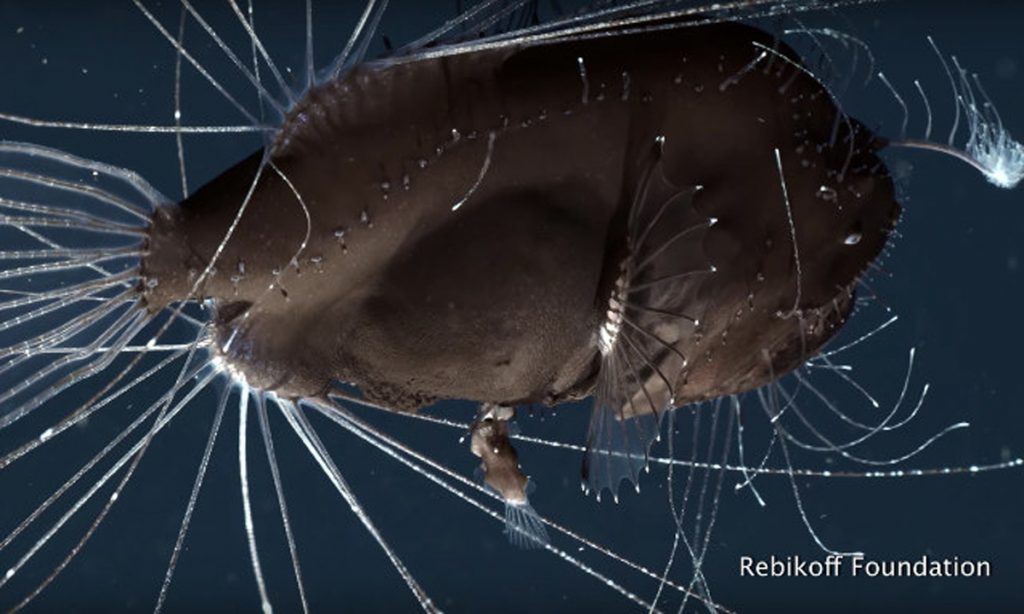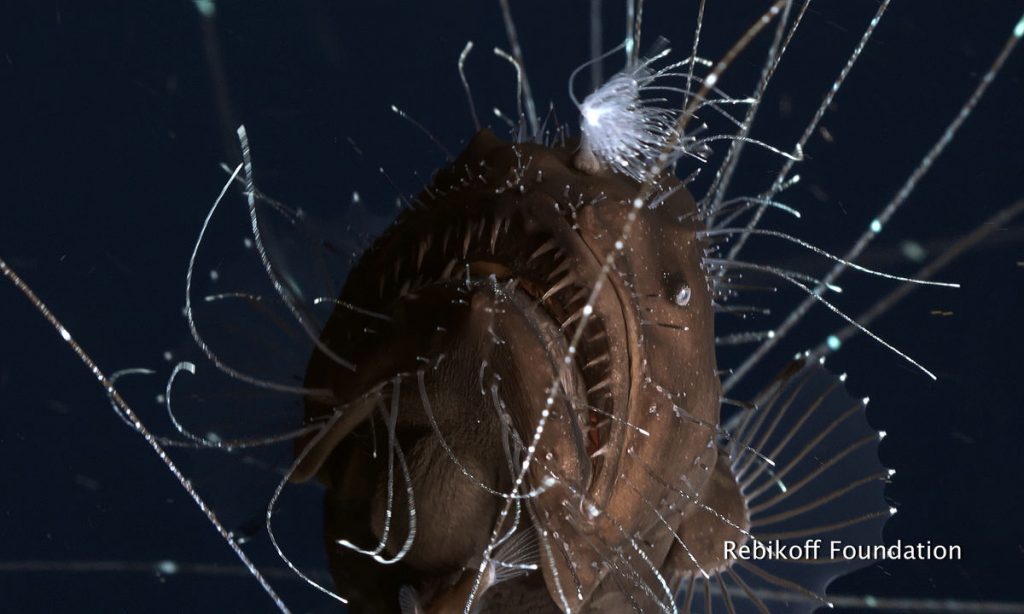
Researchers have spotted a highly unusual sight deep below the ocean: a pair of fanfin anglerfish mating in a never before filmed phenomenon.
Kirsten and Joachim Jakobsen recorded the 6-inch long female anglerfish (Caulophryne jordani) and her mate from a submersible operated by the Rebikoff-Niggeler Foundation back in 2016, but the footage was only recently released to the public. In the video, the female can be seen floating gracefully through the water and waving her bioluminescent fin-rays, which each operate independently — like a cat’s whiskers. Look closely, and you’ll see her much tinier mate attached to her belly.

Until now, scientists didn’t know much about the mating habits of these elusive deep sea creatures. In fact, they’d never even seen a live male. But the groundbreaking footage brings to light some fascinating facts about the relationship between an anglerfish and her mate.
Spending their lives between 980 and 16,400 feet below the waves, anglerfish live in constant, complete darkness, luring prey using a bioluminescent protrusion in front of their mouths (hence the name). Sometimes as much as 60 times smaller than the female, the male spends much of his life searching the dark ocean for a mate.
Once he finds her, he bites into her belly, and his tissues fuse with hers; for good. For the rest of his life he’ll live like a parasite, being fed by nutrients from her blood, while he dangles there to fertilize her eggs.

There are more than 160 known anglerfish species, but the incredibly rare fish have only been observed via deepwater video twice before now. While there are a handful of specimens in jars in museum collections around the world, researchers have never been able to study a live fish in laboratory conditions. Captured anglerfish die because of the change in pressure or the change in temperature, long before they reach the surface.
Unlike other anglerfish observed by scientists, the species in the video has bioluminescent filaments and fin rays that emited lights not just from their tips, but at various points along their length as well. The researchers aren’t entirley sure what they’re for, though it could be used to lure prey or as a disguise for predators.
The only way to answer these and a laundry list of other questions is by observing live anglerfish, and as this amazing new footage illustrates, we’re only just getting started.
See for yourself:




